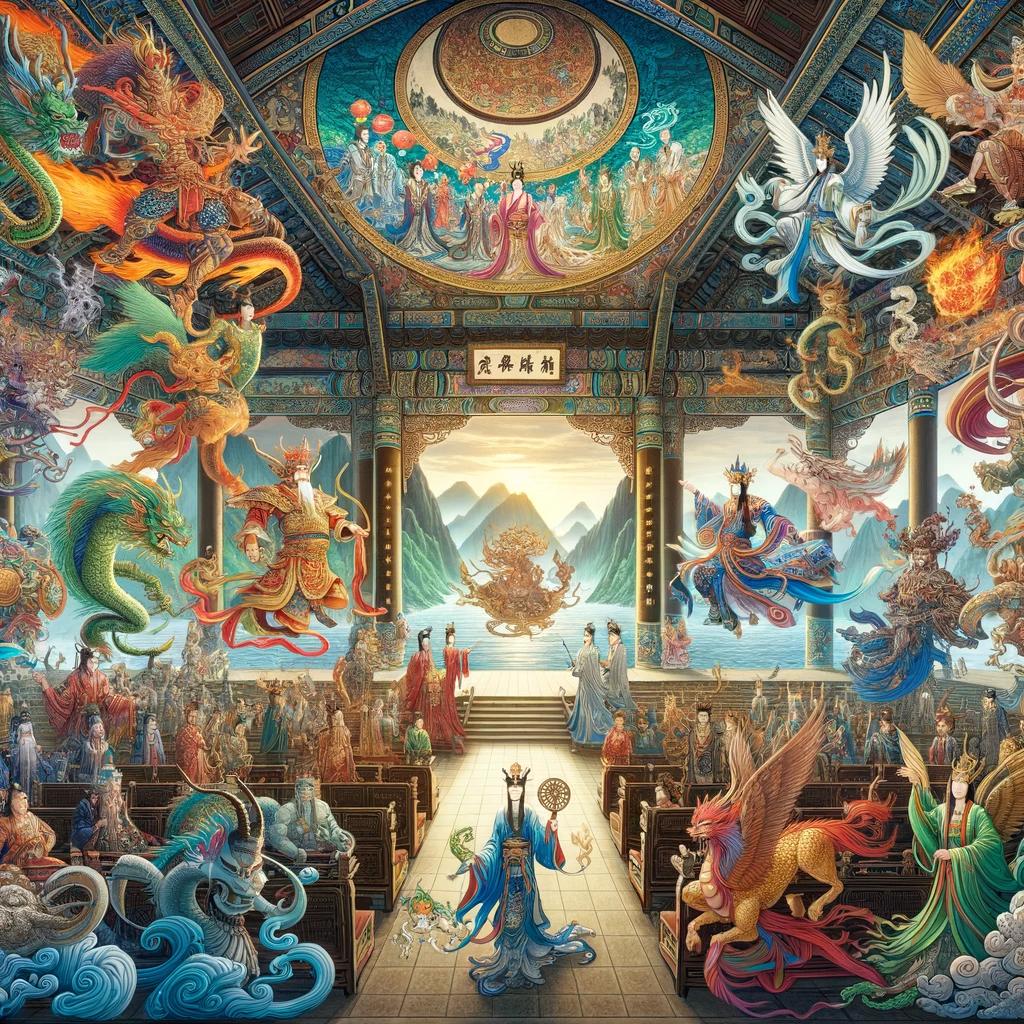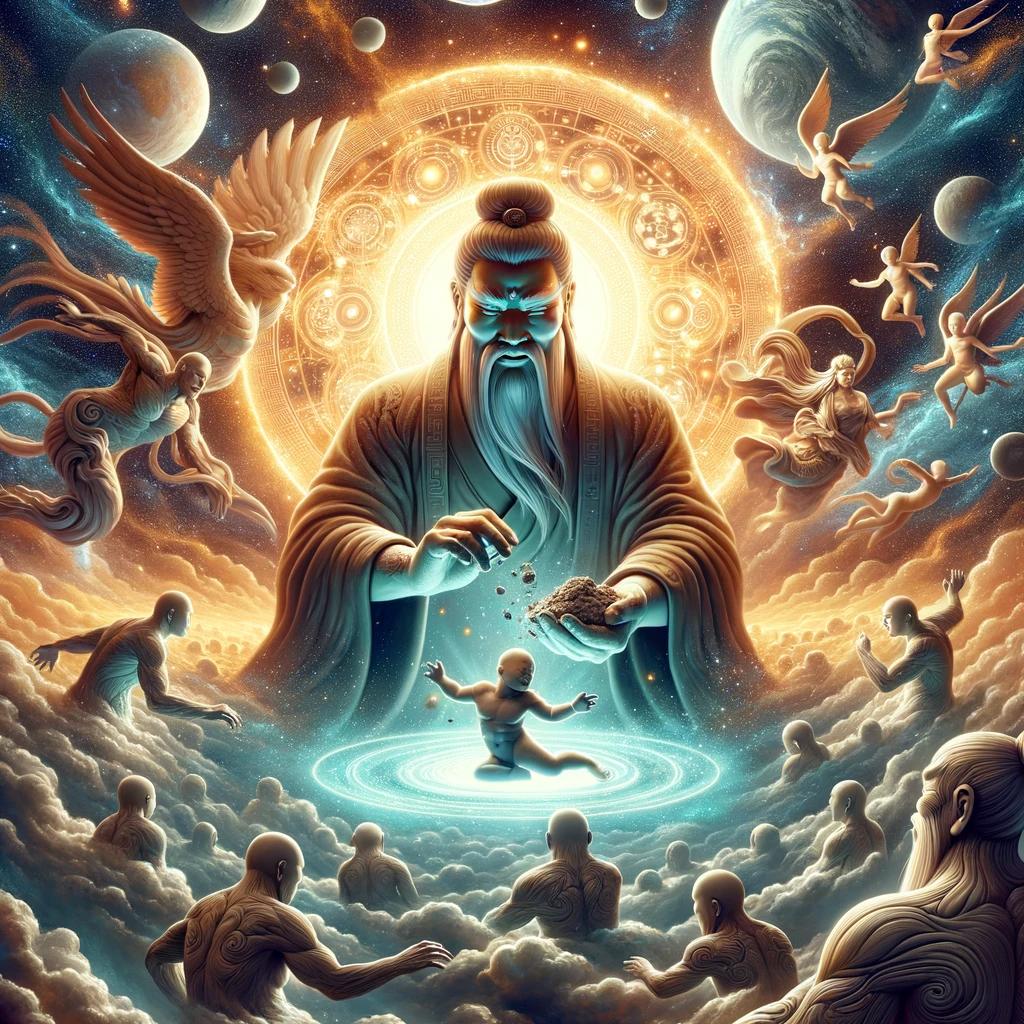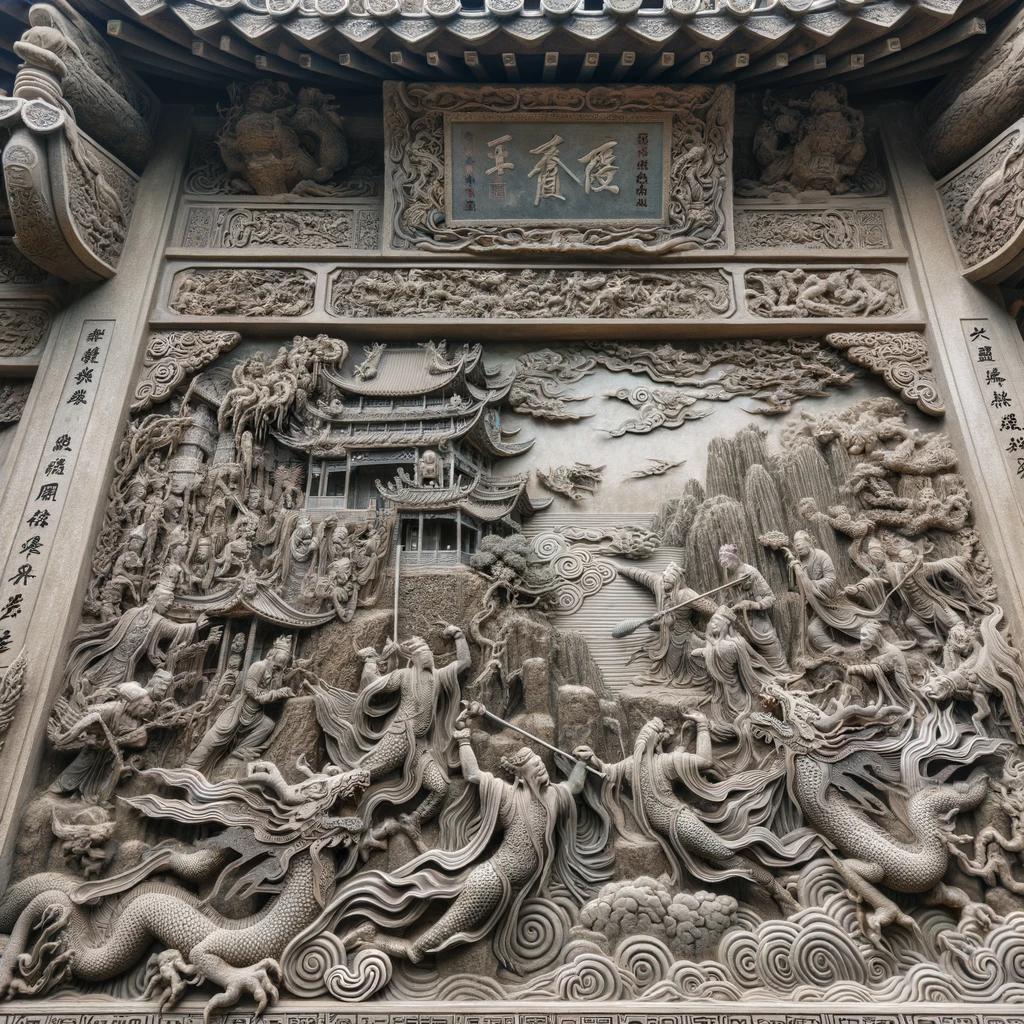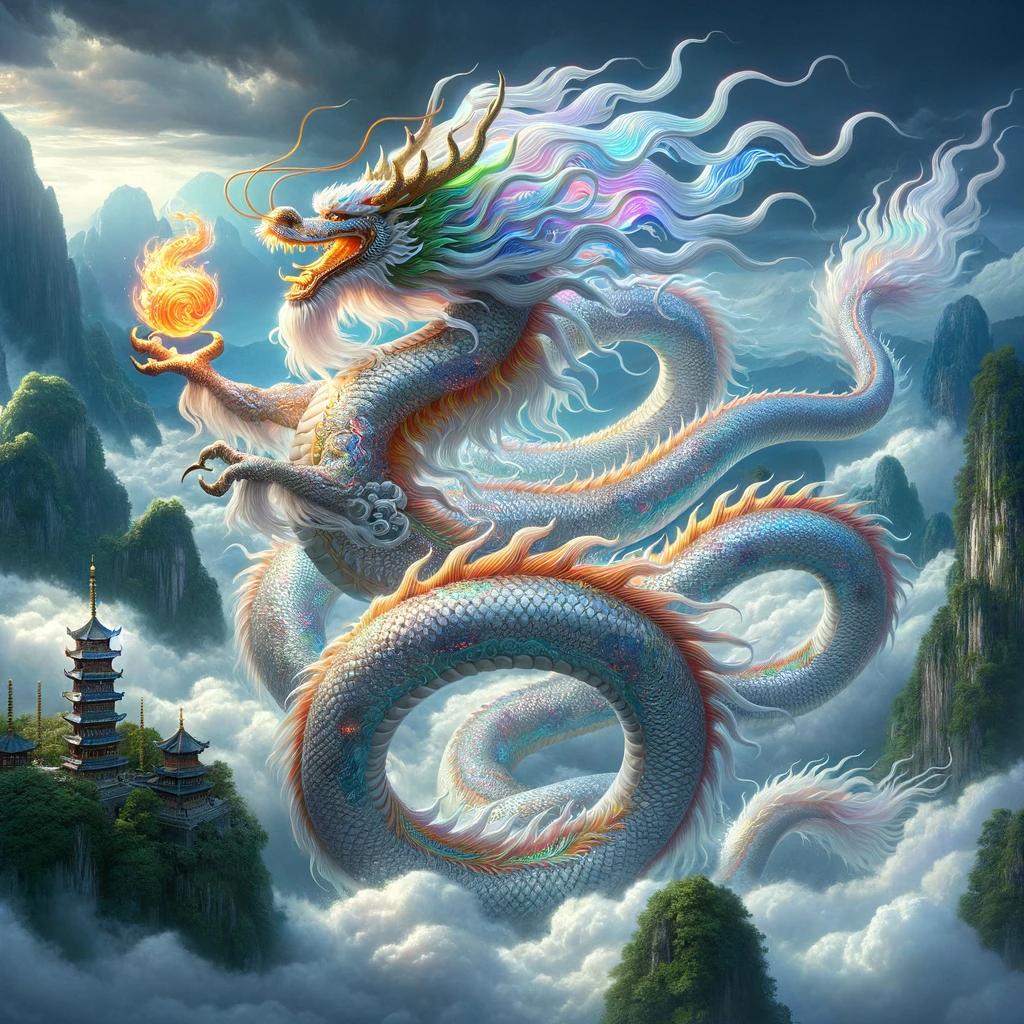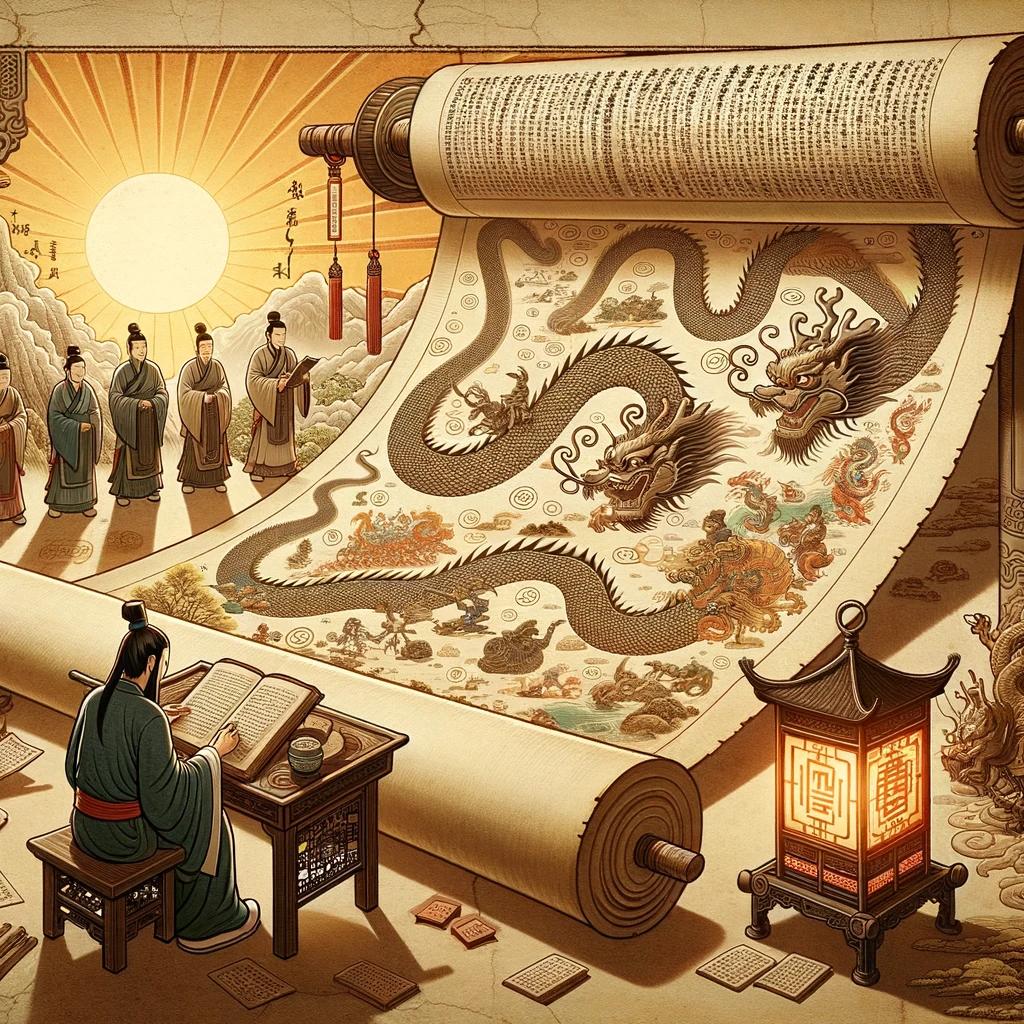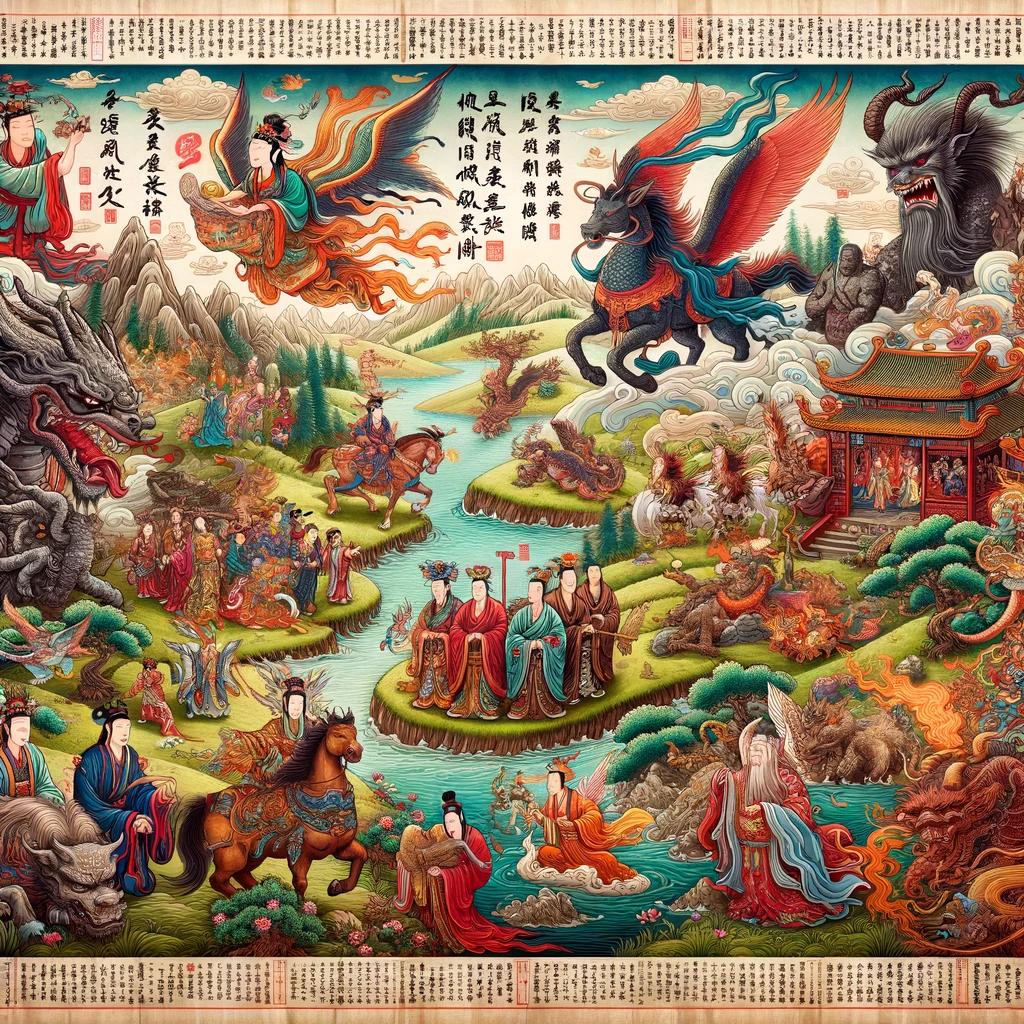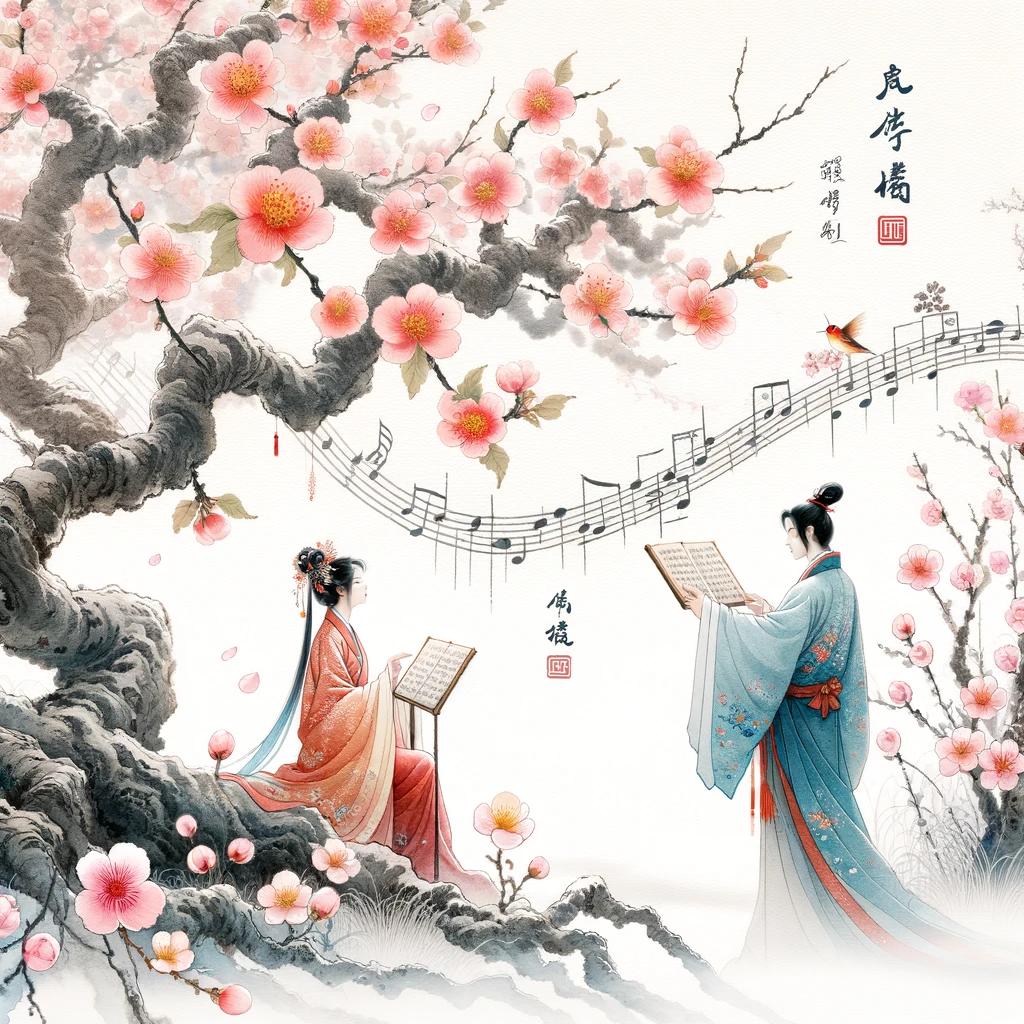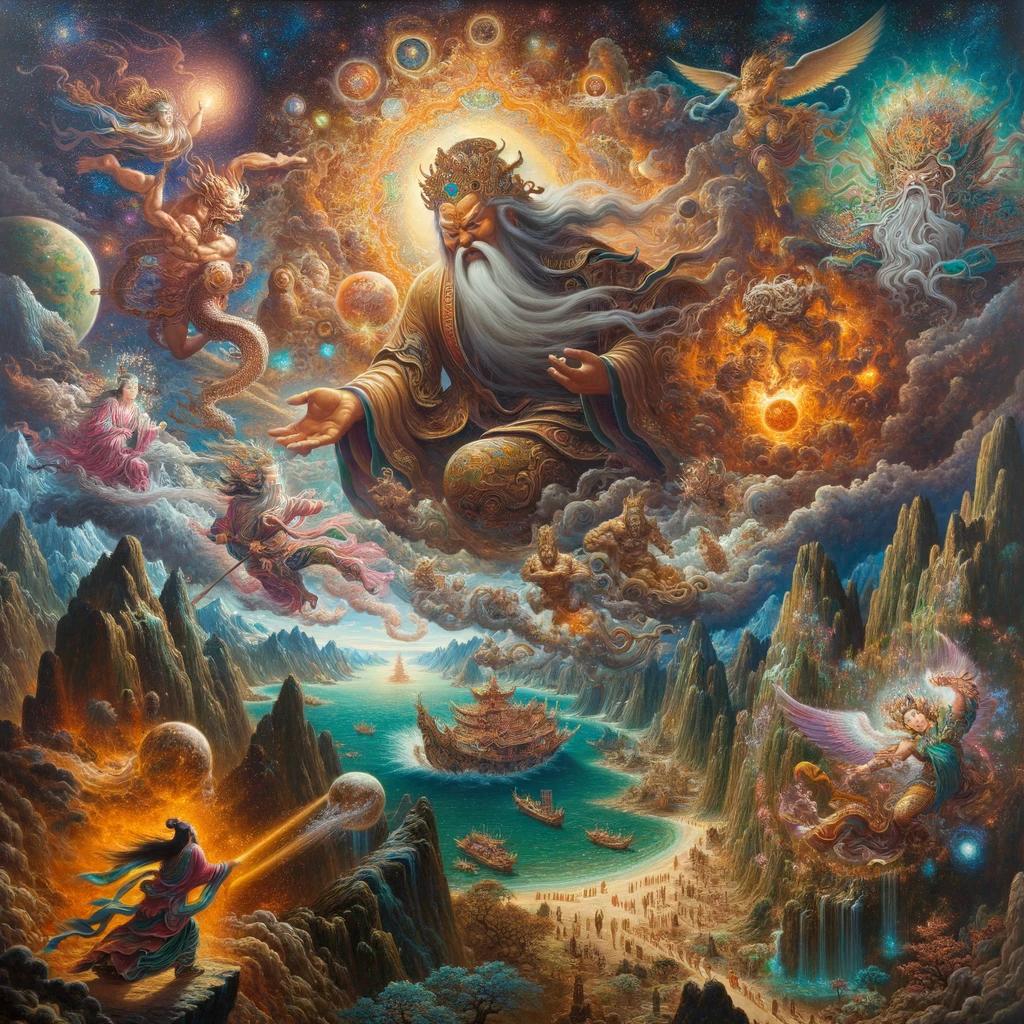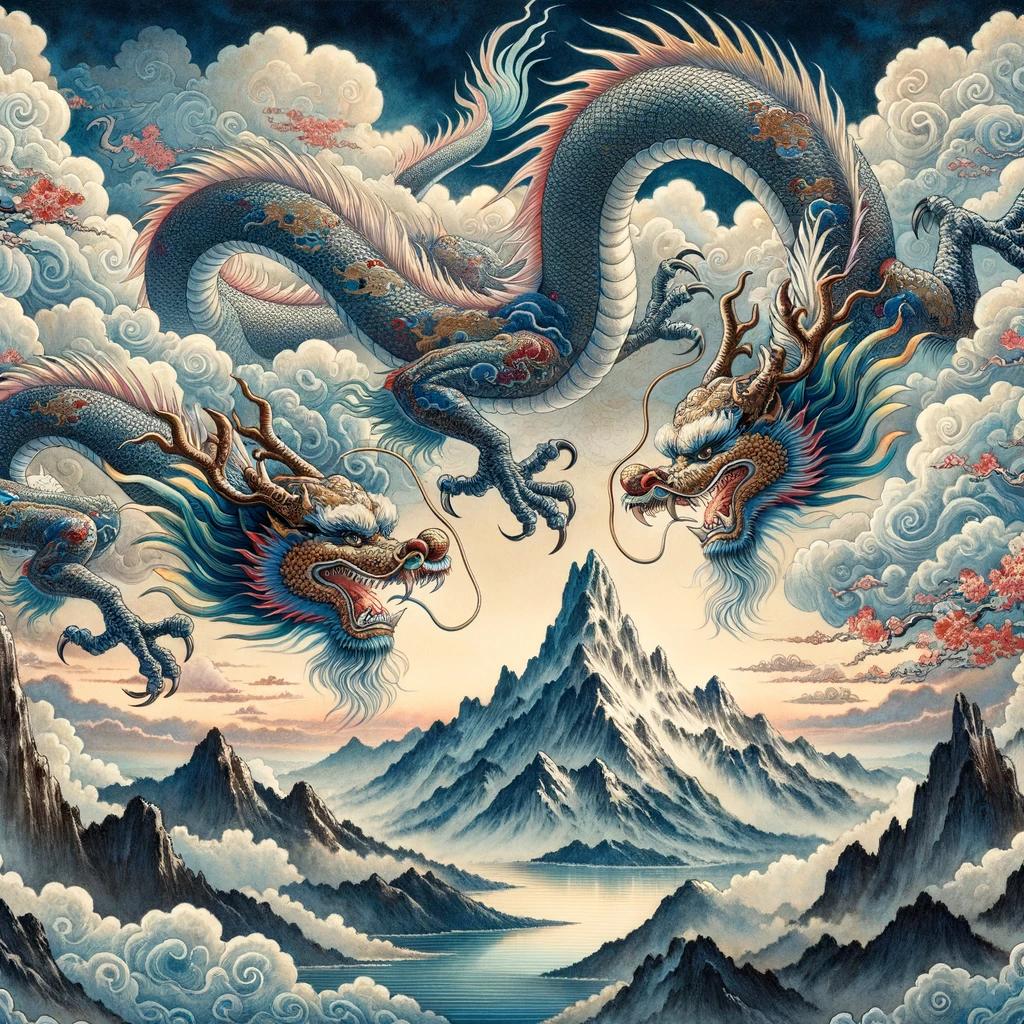Chinese Mythological Characters: Exploring the Legendary Beings of Ancient China
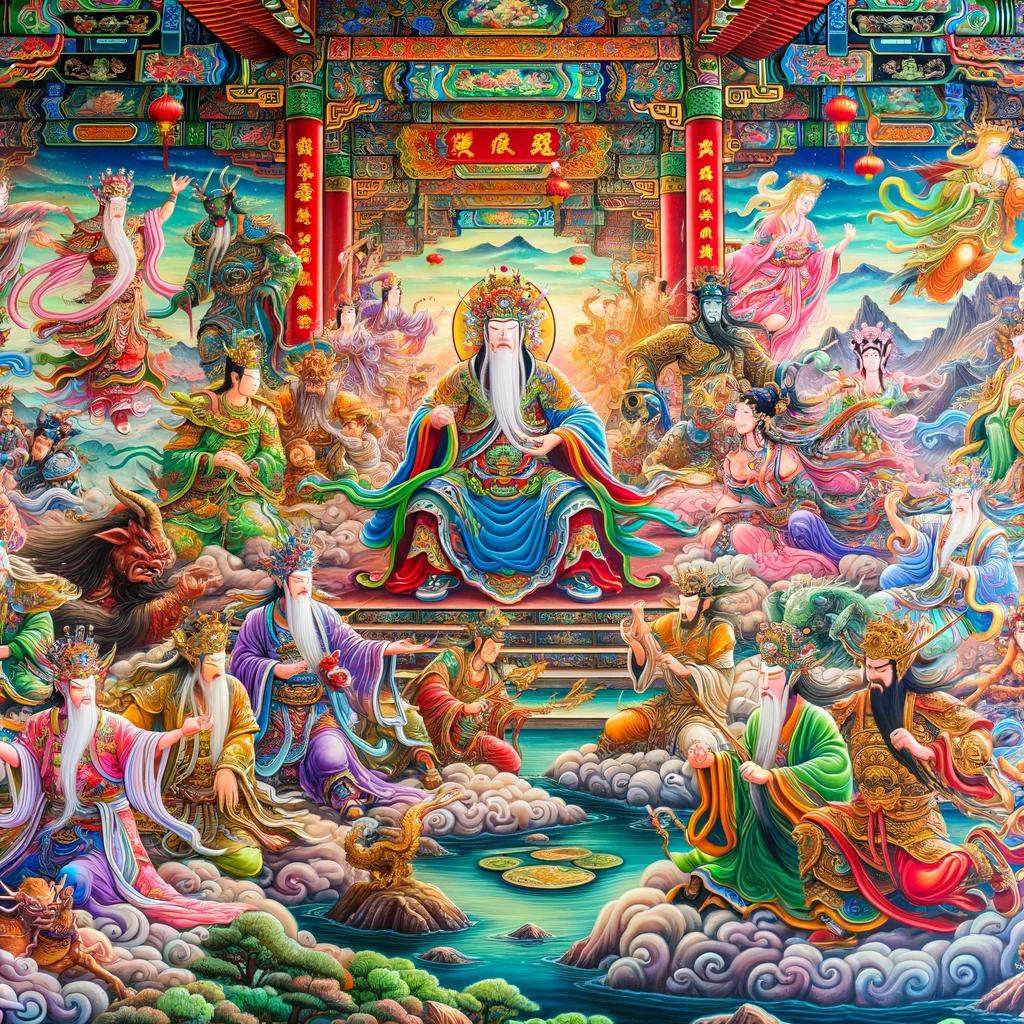
Chinese Mythological Characters are a fascinating part of ancient Chinese culture. In Chinese mythology, gods and deities played significant roles, such as the Jade Emperor, ruler of the heavens, and Nuwa, the goddess of creation and humanity.
Mythical creatures like dragons, known for their power and wisdom, and the phoenix, symbolizing renewal and rebirth, captivated the imagination. The mythology also encompasses enigmatic monsters like the Taotie and Taowu. Additionally, the Four Great Mythological Mountains hold immense cultural significance, each representing different cardinal directions.
Ancient Chinese emperors, including Yao and Huangdi, are legendary figures with captivating myths surrounding their reign. Chinese mythology’s influence extends to literature, culture, art, and architecture.
Chinese Mythology: Gods and Deities
Chinese Mythology is filled with a rich pantheon of divine beings and deities, each with their unique roles and significance.
This section provides an overview of Chinese gods and explores their importance in the realm of mythology.
Chinese Gods: An Overview
Chinese mythology comprises a vast array of gods, encompassing various aspects of life and nature. These gods are worshipped and revered by the Chinese people, who believe in their ability to influence the world and bestow blessings upon believers.
The Role of Gods in Chinese Mythology
In Chinese mythology, gods hold immense power and play a significant role in shaping the world and human existence. They are believed to govern natural forces, control celestial bodies, and influence human affairs, providing guidance, protection, and fortune.
The Jade Emperor: Ruler of the Heavens
The Jade Emperor, known as Yu Huang Shangdi or Tianzi, is the supreme deity in Chinese mythology. He rules over the heavens and is considered the embodiment of cosmic order and justice.
The Jade Emperor is revered as the ultimate authority and a symbol of power and wisdom.
Nuwa: The Goddess of Creation and Humanity
Nuwa is a prominent goddess in Chinese mythology, revered as the creator of humanity and the restorer of the world after a catastrophic event. She is associated with fertility, marriage, and the role of women in society.
Nuwa is often depicted as a half-human, half-serpentine being with divine powers.
Mythical Creatures in Chinese Mythology
The rich and vibrant world of Chinese mythology is filled with awe-inspiring creatures that captivate the imagination. These mythical beings hold deep symbolic meaning and are woven into the tapestry of Chinese culture and folklore.
Let’s explore some of the most prominent mythical creatures in Chinese mythology:
Dragons: Legendary Creatures of Power and Wisdom
Dragons are iconic figures in Chinese mythology, representing power, wisdom, and good fortune. Unlike their Western counterparts, Chinese dragons possess a more benevolent nature and are believed to bring prosperity and rain.
In Chinese folklore, dragons are associated with the Emperor, symbolizing his imperial power. They are often depicted as serpentine creatures with scales and the ability to control water.
The Phoenix: The Mythical Bird of Renewal and Rebirth
The phoenix, known as Fenghuang in Chinese mythology, is a mythical bird associated with renewal, rebirth, and immortality.
It is often portrayed as a beautiful creature with vibrant plumage, symbolizing grace and harmony. In Chinese beliefs, the phoenix is considered a divine messenger of good news and prosperity. It represents the union of Yin and Yang, embodying the balance of opposing forces.
The Taotie and Taowu: Enigmatic Monsters of Chinese Mythology
The Taotie and Taowu are enigmatic monsters known for their insatiable appetite. The Taotie is depicted as a gluttonous creature with a voracious mouth, while the Taowu is described as a fierce beast with a human face and a body covered in swirling patterns.
These mythical creatures symbolize greed, indulgence, and the dangers of unchecked desires. They serve as cautionary tales, reminding individuals to exercise restraint and moderation.
The Four Great Mythological Mountains of China
The Four Great Mythological Mountains of China hold significant cultural and spiritual importance in Chinese mythology.
Each mountain is associated with distinct qualities and symbolism, contributing to the rich tapestry of Chinese folklore and legends.
Mount Tai: The Eastern Mountain
Located in eastern China, Mount Tai represents stability, strength, and harmony. It is considered a sacred site and has been worshipped for centuries by emperors, scholars, and pilgrims. Ascending Mount Tai was seen as a way to gain spiritual enlightenment and connect with the heavens.
Mount Hua: The Western Mountain
Situated in western China, Mount Hua is known for its majestic peaks and treacherous hiking trails. It is associated with the element of earth and represents danger, bravery, and the pursuit of enlightenment.
Many seek to conquer its challenging paths as a test of personal strength and determination.
Mount Heng: The Southern Mountain
As the southernmost of the Four Great Mythological Mountains, Mount Heng symbolizes balance, harmony, and vitality. It is often associated with the element of fire and is believed to be a place of spiritual cleansing and rejuvenation.
Mount Heng is renowned for its natural beauty and attracts visitors seeking tranquility and renewal.
Mount Song: The Central Mountain
Located in central China, Mount Song is revered for its spiritual significance and historical importance. It is associated with wisdom, knowledge, and enlightenment. Mount Song is home to several famous temples and monasteries, attracting pilgrims and tourists alike who seek a deeper connection to Chinese spirituality and cultural heritage.
Ancient Chinese Emperors: Legends and Myths
Yao: The Great Emperor of Ancient Times
Yao, a legendary figure in Chinese mythology, is revered as one of the great emperors of ancient times. Known for his benevolence and wisdom, Yao ruled with fairness and justice, ensuring harmony and prosperity among his people.
According to mythological tales, he introduced a system of agriculture and taught the importance of family values. The legacy of Yao continues to inspire and serves as a symbol of exemplary leadership.
Huangdi: The Yellow Emperor of Chinese Mythology
Huangdi, also known as the Yellow Emperor, holds a prominent place in Chinese mythology. Regarded as the ancestor of all Chinese people, he is attributed with cultural and technological advancements.
Huangdi is said to have introduced the Chinese calendar, writing system, and the concept of traditional medicine. He is revered as a wise and legendary ruler who laid the foundation for Chinese civilization.
The Three Legendary Emperors: Yao, Shun, and Yu
Three legendary emperors, namely Yao, Shun, and Yu, are revered as the founders of Chinese culture and civilization. Each emperor played a significant role in shaping the history and mythology of ancient China.
Yao established a system of governance, Shun promoted morality and social harmony, and Yu is celebrated for his mastery in flood control and water management. The legacies of these three emperors continue to be an integral part of Chinese folklore and historical narratives.
The Influence of Chinese Mythology in Literature and Culture
Chinese Mythology has had a profound impact on various aspects of Chinese literature and culture. Its rich tapestry of mythical themes has captivated generations, inspiring countless literary works and artistic expressions.
From epic poems to classic novels, Chinese literature weaves intricate tales that incorporate gods, goddesses, and legendary creatures.
Mythological Themes in Chinese Literature
Chinese literature abounds with mythological themes that reflect the profound influence of Chinese mythology. These themes serve as vehicles to explore moral values, philosophical concepts, and the timeless struggles between good and evil.
Depictions of gods, such as the mighty Jade Emperor or the crafty Nuwa, add a touch of supernatural elements to narratives, imparting wisdom and lessons to readers.
- Gods as Protagonists: In many literary works, gods take center stage as main characters, demonstrating their powers, virtues, and flaws.
Their interactions with human characters provide a fascinating exploration of the boundaries between mortal and divine realms.
- Quests and Adventures: Mythological characters often embark on epic quests or grand adventures, evoking a sense of heroism and serving as metaphors for personal growth and enlightenment.
- Symbolism and Allegory: Chinese literature ingeniously employs mythological symbols and allegories to convey deeper meanings and social commentary.
Dragons, phoenixes, and other mythical creatures are endowed with symbolic significance, representing power, prosperity, and spiritual enlightenment.
Chinese Mythology in Folk Traditions and Festivals
Beyond literary works, Chinese mythology permeates the fabric of folk traditions and festivals, breathing life into cultural practices and celebrations. These customs, rooted in mythology, contribute to the richness and diversity of Chinese culture.
- Dragon Boat Festival: This annual event commemorates the ancient poet Qu Yuan and features dragon boat races, symbolizing the search for his drowned body and warding off evil spirits.
- Mid-Autumn Festival: Celebrated during the full moon, this festival has deep ties to mythology, particularly the legend of Chang’e, the Moon Goddess.
Families gather to admire the moon, eat mooncakes, and share tales of love, sacrifice, and reunion.
- Chinese New Year: The most significant celebration in Chinese culture, the Lunar New Year, showcases elaborate rituals and customs that invoke deities, ward off evil spirits, and ensure good fortune in the coming year.
The Impact of Chinese Mythology on Art and Architecture
Chinese mythology’s profound influence extends to the realm of art and architecture, where its motifs and symbolism are intricately woven into masterpieces that span centuries.
- Temple Architecture: Chinese temples incorporate mythical creatures, gods, and goddesses into their intricate designs and statues, fostering a spiritual ambiance and serving as places of worship.
- Paintings and Sculptures: Artists through the ages have been inspired by Chinese mythology, creating exquisite paintings and sculptures that depict deities, legendary figures, and mythical creatures.
These artworks not only serve as aesthetic delights but also convey spiritual and cultural messages.
- Performing Arts: Traditional Chinese opera and dance often draw inspiration from mythology, with elaborate costumes, makeup, and choreography bringing legendary characters to life on stage.
Chinese mythology’s enduring presence in literature and culture demonstrates its timeless appeal and its ability to connect generations.
Its influence continues to shape artistic expressions and cultural practices, ensuring that the captivating characters and stories of Chinese mythology remain cherished aspects of Chinese heritage.

